Market surveys remain one of the most valuable tools in a business’s research arsenal, providing critical insights that drive product development, marketing strategies, and business decisions. However, not all surveys are created equal. The difference between actionable intelligence and misleading data often comes down to one crucial factor: data quality. Understanding the science behind effective market surveys can help organizations avoid costly missteps and extract maximum value from their research investments.
The Hidden Costs of Poor Data Quality
When organizations base decisions on flawed survey data, the consequences can be far-reaching and expensive. According to research by Gartner, poor data quality costs organizations an average of $12.9 million annually. These costs manifest in various ways:
First, there are the direct financial implications of making incorrect business decisions. A product launch based on skewed survey data might miss its target market entirely, resulting in poor sales performance and wasted development resources. Similarly, pricing strategies informed by unrepresentative samples can lead to revenue shortfalls that could have been avoided with more reliable data.
Beyond immediate financial impacts, poor survey data quality damages organizational trust in market research as a whole. When executives repeatedly see disconnects between survey predictions and market realities, they may become skeptical of all research findings, potentially disregarding valuable insights along with the flawed ones. This erosion of trust creates a culture where data-driven decision-making takes a back seat to intuition and anecdotal evidence.
Scientific Principles That Drive Survey Quality
Quality market surveys are built on several foundational scientific principles that ensure reliability and validity:
Representative Sampling: The cornerstone of scientific survey methodology is obtaining a sample that accurately represents the target population. This involves careful consideration of sample size, demographic composition, and selection methods. Modern sampling techniques use probability theory to calculate confidence intervals and margins of error, providing clear metrics for the reliability of survey findings.
Question Design and Cognitive Psychology: Effective survey questions account for how the human mind processes information. Cognitive biases such as acquiescence bias (the tendency to agree with statements) and social desirability bias (the tendency to give socially acceptable answers) can significantly skew results if not addressed through methodological safeguards. Question wording, order, and format all influence how respondents interpret and answer questions.
Response Rate Optimization: Low response rates can introduce nonresponse bias, where those who choose to participate differ systematically from those who don’t. Survey scientists employ various techniques to maximize participation, from personalized invitations to incentive structures, ensuring better representation across the target population.
Statistical Validation: After data collection, rigorous statistical tests help identify outliers, inconsistent responses, and patterns that might indicate data quality issues. These validation techniques act as a quality control mechanism before analysis begins.
Technological Advances Transforming Survey Data Quality
Recent technological developments have revolutionized researchers’ ability to ensure high-quality survey data:
Real-time Data Validation: Modern survey platforms can check for logical inconsistencies, incomplete responses, and straight line answering (selecting the same response for all questions) while respondents are still taking the survey. This allows for immediate intervention, such as displaying clarification messages or flagging problematic responses for review.
Machine Learning Applications: Artificial intelligence algorithms can now detect patterns of fraudulent or low-quality responses that might escape human detection. These systems analyze response times, typing patterns, and answer consistency to identify potentially problematic data points.
Mobile Optimization: With most online activity now occurring on mobile devices, surveys must be designed for smaller screens and touch interfaces. Failing to optimize for mobile can introduce measurement error by making questions harder to read or answer options difficult to select accurately.
Multi-modal Verification: The most sophisticated survey systems now triangulate findings across different data collection methods, combining explicit survey responses with behavioral data and qualitative insights to create a completer and more accuratesurvey picture of consumer preferences and opinions.
Building a Culture of Data Quality
Ultimately, the science of effective market surveys isn’t just about methodological rigor—it requires fostering an organizational culture that values data quality. This includes:
- Investing in proper research design rather than rushing to field surveys quickly
- Allocating resources for adequate sample sizes instead of settling for convenience samples
- Working with survey design professionals who understand the scientific principles involved
- Being transparent about limitations and margins of error when reporting findings
- Creating feedback loops to validate survey findings against actual market outcomes
Organizations that embrace these principles recognize that high-quality survey data isn’t merely nice to have—it’s essential for making sound business decisions in competitive markets. The science behind effective market surveys continues to evolve, but the fundamental importance of data quality remains constant. As the business landscape grows increasingly complex, the competitive advantage will go to those who can distinguish reliable market signals from noise.
***
To get a #ProfessionalGradeMarketing team working for you, contact Ambient Array today.


